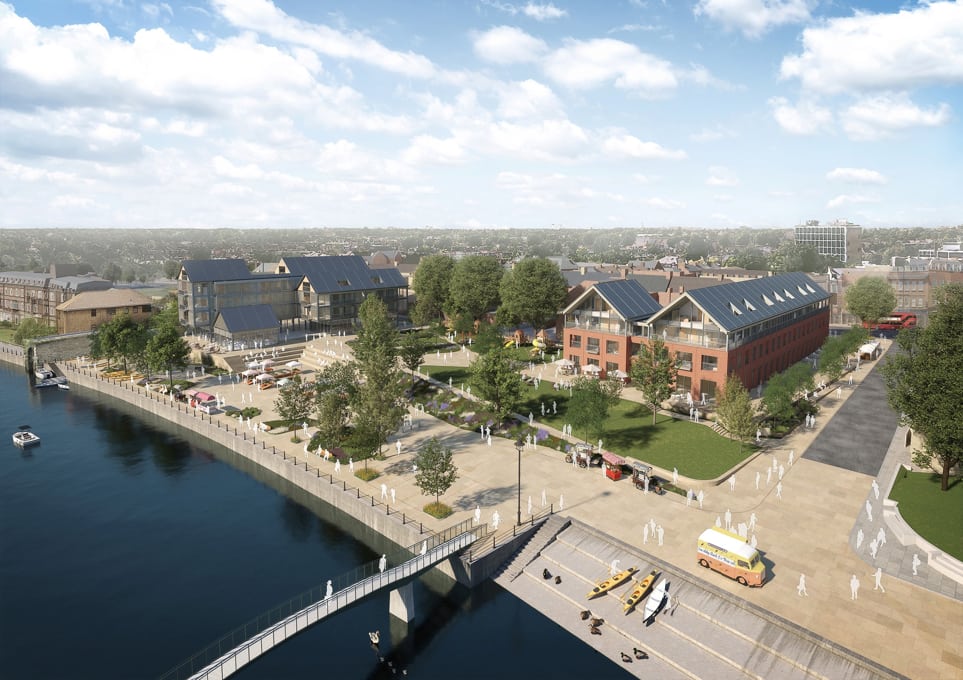The Future of Richmond Twickenham Riverside: Change of Use Trends & Insights
Richmond Twickenham Riverside is one of London’s most sought-after locations, offering a unique blend of historical charm, vibrant commercial spaces, and picturesque riverside views. With an ever-growing demand for modern amenities and efficient land use, Change of Use applications have become increasingly relevant for property owners, investors, and businesses looking to capitalize on this prime location. Whether you’re considering converting a commercial space into residential units, transforming an office into a retail establishment, or repurposing a historic building, understanding the legal and regulatory landscape is crucial.
What is Change of Use?
Change of Use refers to altering the purpose of a building or land from one designated category to another. In the UK, these classifications are defined under the Use Classes Order 1987 (as amended), which outlines specific categories for residential, commercial, and industrial properties. Any significant alteration in use generally requires planning permission from the London Borough of Richmond upon Thames.
Common Change of Use Scenarios in Richmond Twickenham Riverside
1. Commercial to Residential Conversions
With the increasing demand for housing, many property owners are looking to convert offices and retail spaces into residential apartments. This type of conversion is particularly popular along Twickenham Riverside, where older commercial buildings can be revitalized into luxury apartments overlooking the Thames. However, these conversions must comply with permitted development rights (PDR), fire safety regulations, and energy efficiency standards.
2. Retail to Hospitality Establishments
The riverside area is a hotspot for tourism, making it an attractive location for restaurants, cafés, and boutique hotels. If you own a retail unit and wish to transform it into a dining or hospitality venue, you will need to consider factors such as licensing, parking provisions, and noise control measures.
3. Industrial to Mixed-Use Developments
Twickenham has a mix of old warehouses and industrial spaces that are prime candidates for mixed-use developments. These spaces can be transformed into a blend of commercial units on the ground floor with residential or office spaces above. Developers must ensure that zoning regulations and environmental impact assessments (EIAs) are met before undertaking such projects.
4. Office to Co-Working Spaces
As remote working trends continue to grow, many traditional office spaces are being repurposed into flexible co-working environments. This adaptation often requires modifications to building layouts, compliance with accessibility standards, and the installation of high-speed internet infrastructure.
Key Considerations for Change of Use in Richmond Twickenham Riverside
1. Planning Permission Requirements
Depending on the nature of the change, planning permission may be required. Some changes are covered under permitted development rights, but others, particularly in conservation areas like Richmond Riverside, require full approval. Consulting a local planning consultant or architects can streamline this process.
2. Building Regulations Compliance
Even if planning permission is granted, property owners must adhere to building regulations that cover aspects such as fire safety, insulation, accessibility, and energy efficiency. For example, converting a historic warehouse into apartments may require soundproofing and structural reinforcements.
3. Environmental and Flood Risk Assessments
Being a riverside location, developments in Twickenham must account for flood risk assessments. The Environment Agency has strict guidelines on mitigation measures, such as flood-resistant building materials and elevated floor levels, to prevent water damage.
4. Impact on Local Infrastructure
A change in property use can have implications for traffic, parking availability, and public transport access. The local council may impose conditions such as contributing to infrastructure improvements or including sustainable transport options like bicycle storage.
Steps to Apply for a Change of Use
- Research Planning Policies: Review the Richmond Local Plan and any conservation area restrictions.
- Engage with Local Authorities: Seek pre-application advice from the London Borough of Richmond upon Thames.
- Prepare Documentation: Submit a detailed application, including architectural drawings, impact assessments, and business justifications.
- Await Decision: The local planning authority will review the proposal and consult with stakeholders before granting approval.
- Begin Conversion Works: Ensure compliance with building regulations and conduct necessary inspections.
Conclusion
Richmond Twickenham Riverside is a prime location for property transformation and investment, but navigating the Change of Use process requires a thorough understanding of planning regulations, environmental considerations, and local policies. Whether you’re a developer, investor, or business owner, ensuring compliance with all requirements can lead to successful and profitable property conversions. By carefully planning each step and engaging with local authorities, you can unlock the full potential of your property while enhancing the character of this prestigious riverside destination.



No responses yet